Chicken Cacciatore is more than just a dish; it’s a culinary experience that transports you straight to Italy. This rustic chicken stew features tender pieces of chicken simmered in a lively tomato sauce infused with herbs and vegetables. With its robust flavors and comforting aroma, Chicken Cacciatore has become a cherished family favorite across the globe. The best part? It’s surprisingly easy to prepare! Whether you’re hosting a dinner party or looking for a cozy meal for your family, this recipe is sure to impress.
The origins of Chicken Cacciatore date back to traditional Italian cooking. The term “cacciatore” translates to “hunter” in Italian, hinting at its roots as a hearty meal for hunters returning from the field. Today, home cooks embrace this dish for its rich flavors and versatility. You can serve it over pasta, rice, or even polenta. In this article, we will discuss the main ingredients you’ll need and provide step-by-step instructions to create your very own Chicken Cacciatore at home. Get ready to tantalize your taste buds with an authentic Italian meal that celebrates love for food!
Main Ingredients
Chicken
The star of any Chicken Cacciatore recipe is undoubtedly the chicken itself. For this dish, you’ll want 4 bone-in, skin-on chicken thighs (about 1.5 pounds). This cut provides rich flavor and juiciness as it cooks slowly in the sauce. Bone-in pieces also help retain moisture while adding depth to the final dish. If you prefer white meat, feel free to use chicken breasts instead; however, thighs generally yield better results due to their higher fat content.
Olive Oil
Olive oil plays a crucial role in creating the base flavor for this dish. Use about 2 tablespoons of extra virgin olive oil for sautéing the vegetables and browning the chicken. The oil not only adds richness but also enhances the overall taste profile of your Chicken Cacciatore. Choose high-quality olive oil for optimal flavor; its fruity notes will complement the other ingredients beautifully.
Bell Peppers
For this recipe, you’ll need 1 red bell pepper and 1 green bell pepper, sliced into strips. These peppers add sweetness and color to your dish while providing essential vitamins like vitamin C and A. Their natural crunch contrasts wonderfully with the tender chicken and luscious sauce.
Onion
One medium onion (approximately 150 grams) is essential for building flavor in your Chicken Cacciatore. Dice it finely so that it melds seamlessly into the sauce as it cooks down. Onions become sweet when caramelized, contributing depth to your overall flavor profile.
Garlic
Garlic is a must-have ingredient that brings an aromatic punch to your dish! Use 3 cloves of minced garlic for maximum flavor impact. Garlic’s robust taste pairs harmoniously with the tomatoes in your sauce while enhancing all other ingredients.
Tomatoes
For a rich tomato base, use one 14-ounce can of diced tomatoes along with one cup of tomato passata (or crushed tomatoes). The combination ensures a thick sauce that clings beautifully to the chicken while adding acidity—a key component in balancing flavors.
Herbs
To elevate your Chicken Cacciatore further, incorporate fresh herbs like basil and oregano—use around 2 teaspoons of dried oregano plus some fresh basil leaves (about 10 leaves). These herbs add aromatic freshness that perfectly complements each bite.
Red Wine
A splash of red wine (around half a cup) helps deepen the flavor complexity of your dish while adding acidity needed for balance. Opt for a dry red wine such as Merlot or Chianti; avoid sweet wines which may alter your desired taste.
Salt & Pepper
Lastly, season generously with salt (around 1 teaspoon) and freshly cracked black pepper (to taste) throughout cooking to enhance each ingredient’s natural flavors.
How to Prepare Chicken Cacciatore
Step One: Sear the Chicken
Begin by heating olive oil in a large skillet or Dutch oven over medium heat. Once hot but not smoking, add the seasoned chicken thighs skin-side down without overcrowding them—this allows them to achieve perfect golden-brown crusts! Sear each side for about five minutes until crispy before transferring them onto a plate temporarily while you prep vegetables next.
Step Two: Sauté Vegetables
In the same pan used for searing chicken (don’t wipe it clean), toss in diced onions along with sliced bell peppers over medium heat—stir frequently until softened (roughly seven minutes). Add minced garlic during last minute of cooking so it doesn’t burn; combine well ensuring no bits stick at bottom—it’s packed with flavor!
Step Three: Deglaze Pan
Now it’s time to elevate those flavors even further! Pour half a cup of red wine into your veggie mixture while scraping up any browned bits from seared chicken lingering at bottom—this step adds layers upon layers of deep deliciousness! Allow wine mixture simmer away until reduced by half before introducing tomatoes next.
Step Four: Make Tomato Sauce
Stir in canned diced tomatoes followed by tomato passata—let everything come together harmoniously! Season lightly with salt/pepper then return previously browned chicken back into pan nestling them amidst sauce evenly throughout—the goal here is proper soaking action happening!
Step Five: Simmer
Cover skillet tightly using lid whilst reducing heat low enough so that mixture simmers gently—allowing flavors meld beautifully together! Let everything bubble away undisturbed from approximately thirty minutes up until juicy tenderness achieved; check occasionally making sure nothing burns on bottom!
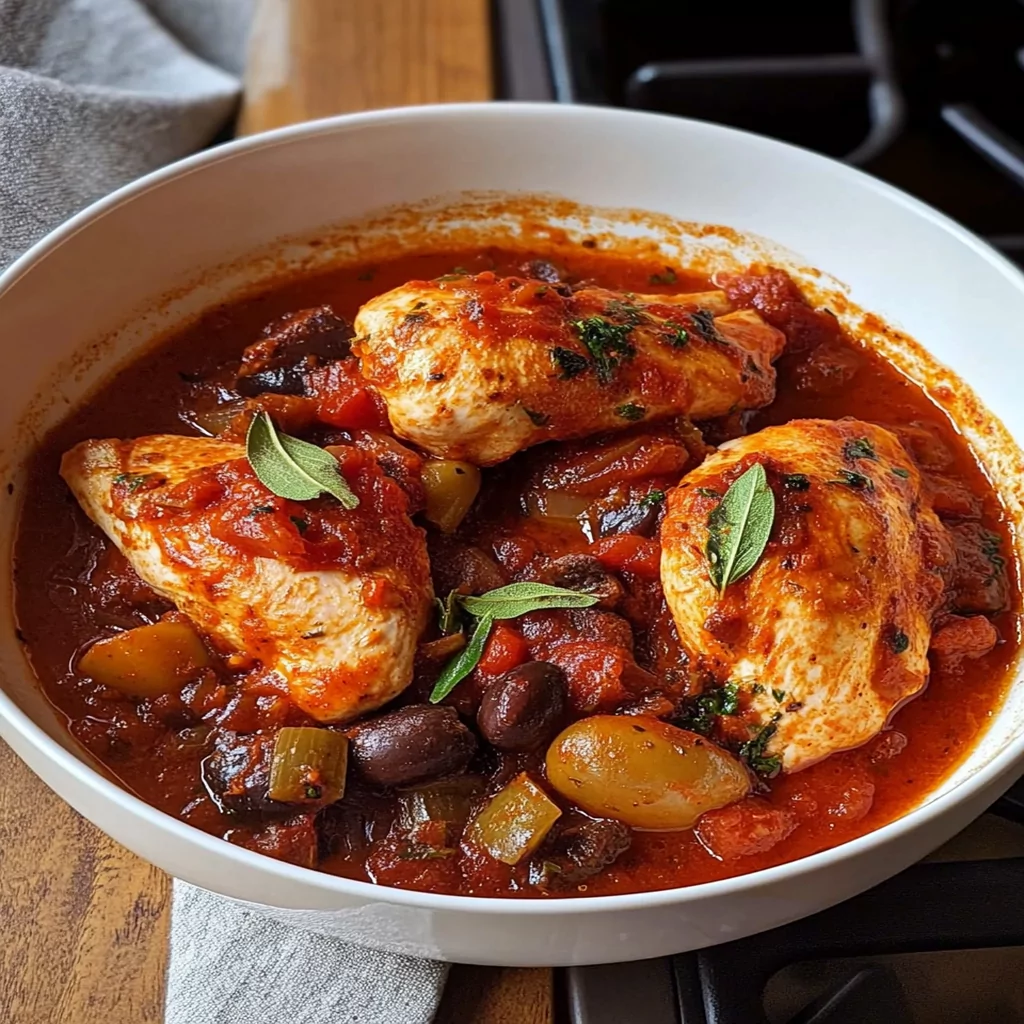
Serving and Storing Tips
Serving Suggestions
To serve Chicken Cacciatore perfectly warm—it pairs fabulously alongside creamy polenta or al dente pasta tossed lightly in olive oil! Garnish generously with fresh basil leaves atop plate offering an aromatic flair every bite deserves—a sprinkle of grated Parmesan cheese could also be delightful addition if desired!
Storage Guidelines
Leftovers are inevitable since this dish often serves multiple portions; store them properly within airtight containers placed inside refrigerator where they’ll keep well up three days maximum—you can reheat gently stovetop or microwave when ready enjoy again later!
This hearty meal also freezes well—just ensure cooled completely before transferring into freezer-friendly bags or containers ensuring no excess air remains inside allowing maximum freshness later on thawed out after several weeks stored securely frozen away!
Mistakes to avoid
One common mistake when preparing Chicken Cacciatore is using low-quality chicken. Opting for fresh, high-quality chicken enhances the dish’s flavor and texture. Organic or free-range chicken is preferable as it offers a richer taste and ensures ethical sourcing. Cooking with inferior quality meat can lead to a less satisfying meal, diminishing the overall experience.
Another frequent error is neglecting the seasoning. Chicken Cacciatore relies heavily on herbs and spices such as oregano, basil, and garlic to create its signature flavor. Failing to season adequately at different stages of cooking can result in a bland dish. It’s crucial to taste and adjust the seasoning throughout the cooking process for optimal results.
Overcooking the chicken is another pitfall that many encounter. Chicken should be cooked until it reaches an internal temperature of 165°F. Cooking it beyond this point can render the meat dry and tough, compromising its juiciness. Using a meat thermometer allows you to achieve perfectly cooked chicken every time.
Forgetting to brown the chicken before simmering is also a mistake that affects flavor development. Browning adds depth through caramelization, enhancing both taste and visual appeal. Take the time to sear each piece properly before adding other ingredients; this step elevates your Chicken Cacciatore significantly.
Lastly, not allowing enough time for the sauce to simmer can lead to underdeveloped flavors. Slow cooking allows all ingredients to meld beautifully, resulting in a rich sauce that complements the chicken perfectly. Aim for at least 30 minutes of simmering after adding all components for a truly authentic experience.
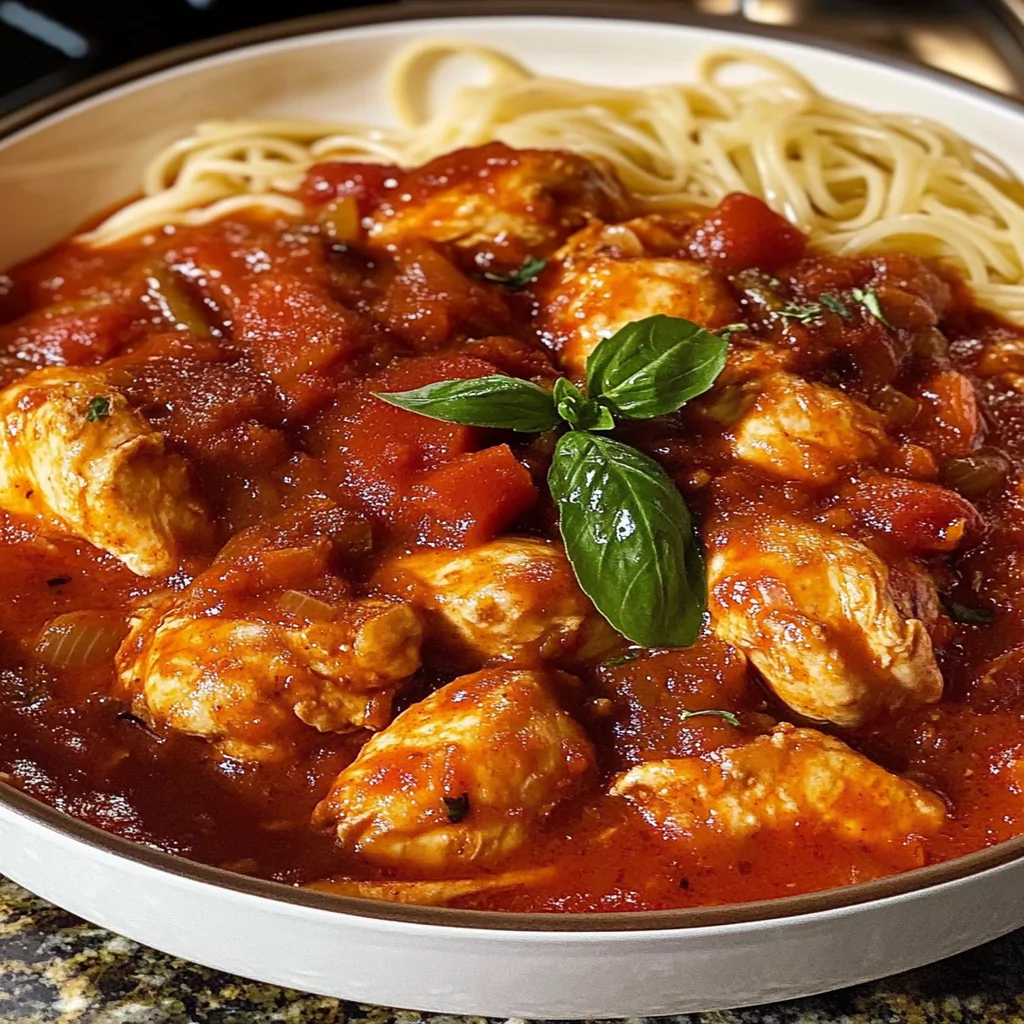
Tips and tricks
To achieve the best Chicken Cacciatore, start by marinating your chicken overnight in olive oil, garlic, and herbs. This simple step infuses flavor deeply into the meat, making it tender and aromatic when cooked. The longer marination not only enhances taste but also helps in achieving a juicy texture.
When selecting vegetables, opt for fresh bell peppers, onions, and tomatoes for your Chicken Cacciatore. These ingredients add color and vibrancy while contributing essential nutrients. Sauté them until they’re soft before adding your chicken; this builds a flavorful base for your sauce.
Incorporating wine into your recipe can elevate Chicken Cacciatore significantly. Choose a good-quality red wine that you enjoy drinking; this will enhance the dish’s complexity without overpowering other flavors. Allowing the alcohol to cook off during simmering reveals its rich notes while blending seamlessly with other ingredients.
Using homemade or high-quality canned tomatoes instead of low-grade products will also make a difference in taste. Look for San Marzano tomatoes if possible; they are known for their sweetness and low acidity which perfectly balances out the savory elements of your dish.
Don’t forget about garnishing! Fresh basil or parsley sprinkled over your finished Chicken Cacciatore adds an aromatic touch that enhances presentation and flavor alike. Serving with crusty bread or over pasta makes it even more inviting—perfect for sharing with friends and family.
Suggestions for Chicken Cacciatore
When preparing Chicken Cacciatore, consider serving it alongside polenta or rice for a wonderful pairing that absorbs all those delicious juices from the sauce. Polenta offers a creamy texture that contrasts nicely with the robust flavors of the cacciatore while rice provides a neutral base that highlights every bite.
Another suggestion is to experiment with different proteins besides chicken if you want variety in your meals. Try using bone-in pork chops or even firm tofu as alternatives; both options will absorb flavors beautifully while providing unique twists on this classic recipe.
For those who love spice, consider adding crushed red pepper flakes or diced jalapeños to brighten up your dish further. This addition brings an exciting heat level that balances well with sweetness from tomatoes and bell peppers without overwhelming other flavors.
Lastly, remember that leftovers can be magical! After enjoying Chicken Cacciatore on day one, try repurposing leftover sauce as a base for pasta dishes or pizza toppings later in the week—this approach minimizes waste while maximizing flavor potential in future meals!
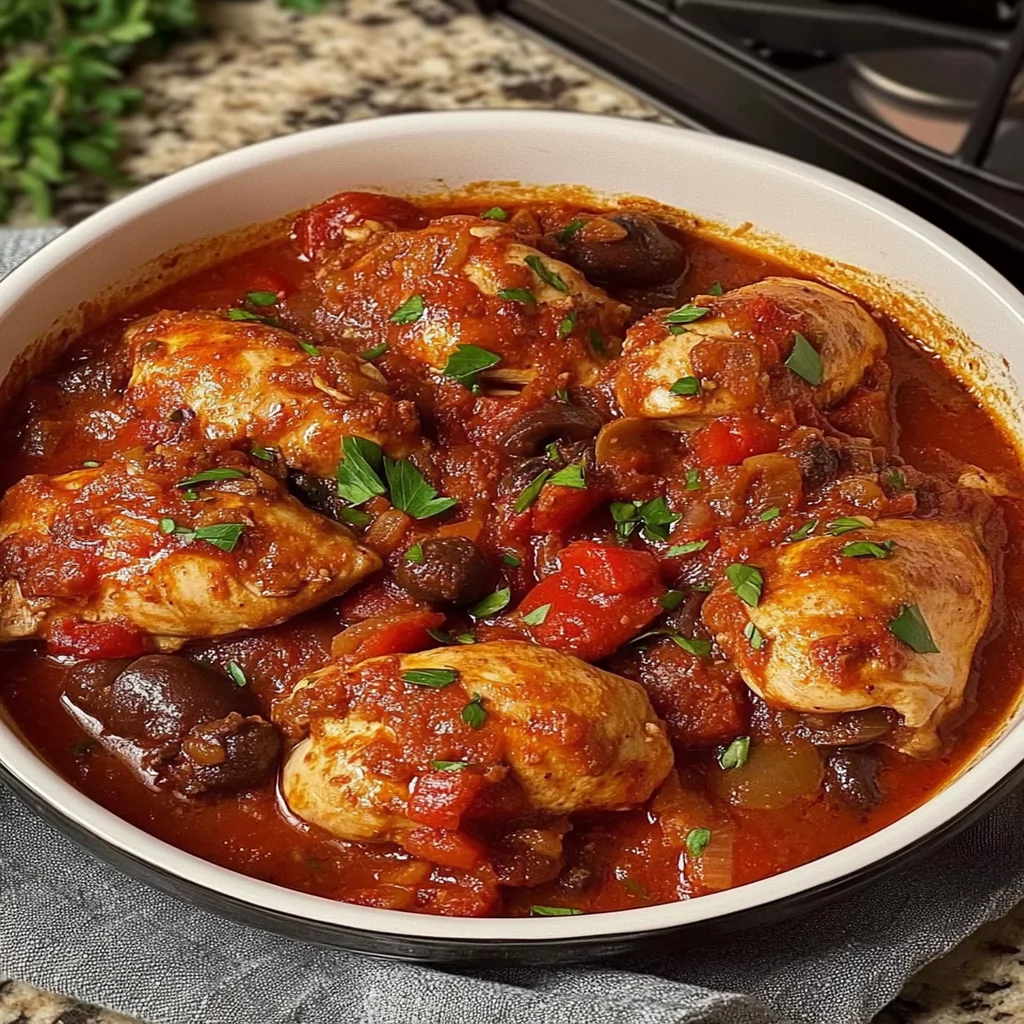
FAQs
What can I serve with Chicken Cacciatore?
Chicken Cacciatore pairs excellently with various sides such as pasta, polenta, or crusty bread. Pasta allows you to soak up delicious sauce while polenta provides creaminess contrasting with robust flavors. Crusty bread is perfect for mopping up any remaining juice on your plate! Consider seasonal vegetables as well; sautéed greens like spinach or broccoli complement this dish wonderfully!
Can I make Chicken Cacciatore ahead of time?
Yes! In fact, making Chicken Cacciatore ahead of time often enhances its flavors as they have more time to develop together during storage! Store leftovers in an airtight container in the fridge for up to four days or freeze portions if needed—just reheat gently when you’re ready!
How do I store leftover Chicken Cacciatore?
To store leftover Chicken Cacciatore properly: allow it to cool completely before transferring it into airtight containers. It can stay fresh in the refrigerator for up to four days or frozen for up six months without losing much quality—a perfect solution when meal planning!
Can I use boneless chicken breasts instead of thighs?
You can certainly use boneless chicken breasts instead of thighs; however remember they may cook quicker than bone-in pieces! Keep an eye on cooking times closely—overcooked breast meat tends towards dryness whereas thighs remain moist due their higher fat content!
What type of wine should I use?
A medium-bodied red wine like Chianti works wonderfully with Chicken Cacciatore due its fruity notes complementing tomato-based sauces nicely! Alternatively consider Merlot or Pinot Noir if you prefer something lighter—always aim for wines you’d enjoy drinking yourself!
Is there a vegetarian version of Chicken Cacciatore?
Absolutely! For a vegetarian take on this classic dish simply swap out chicken for hearty vegetables like eggplant mushrooms zucchini combined with chickpeas creating satisfying textures alongside traditional sauces! You’ll retain familiar tastes whilst enjoying plant-based goodness!
Conclusion
In summary, preparing delicious Chicken Cacciatore involves avoiding common mistakes like using poor-quality ingredients and neglecting proper seasoning techniques which could hinder flavor development significantly! By following useful tips such as marinating overnight ensuring optimal freshness throughout cooking along incorporating vibrant veggies—you’ll create an inviting meal everyone loves! Exploring variations through alternative proteins side dishes enhances versatility within recipes too ensures never-ending enjoyment around table gatherings! Finally don’t forget about leftovers—they might just surprise you when transformed into new culinary delights later down line!
Print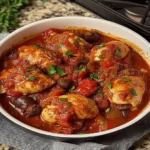
Chicken Cacciatore Recipe
- Prep Time: 15 minutes
- Cook Time: 45 minutes
- Total Time: 1 hour
Ingredients
- 4 bone-in, skin-on chicken thighs (about 1.5 pounds)
- 2 tablespoons extra virgin olive oil
- 1 red bell pepper, sliced
- 1 green bell pepper, sliced
- 1 medium onion, diced
- 3 cloves garlic, minced
- 14-ounce can diced tomatoes
- 1 cup tomato passata (or crushed tomatoes)
- 2 teaspoons dried oregano
- 10 fresh basil leaves
- ½ cup dry red wine (Merlot or Chianti)
- 1 teaspoon salt
- Freshly cracked black pepper, to taste
Instructions
- Sear the Chicken: Heat olive oil in a large skillet over medium heat. Add chicken thighs skin-side down and sear for about 5 minutes on each side until golden-brown. Remove chicken and set aside.
- Sauté Vegetables: In the same pan, add diced onion and bell peppers. Cook for about 7 minutes, stirring occasionally until softened. Add minced garlic during the last minute.
- Deglaze the Pan: Pour in red wine and scrape any browned bits from the bottom. Let the wine reduce by half.
- Make Tomato Sauce: Stir in diced tomatoes and tomato passata. Season with salt and pepper. Return the chicken to the pan, nestling it into the sauce.
- Simmer: Cover and let everything simmer on low heat for 30 minutes, until the chicken is cooked through and tender. Stir occasionally to prevent burning.
Notes
- For a richer flavor, you can use bone-in chicken breasts instead of thighs.
- Add a splash of balsamic vinegar to the sauce for extra depth.

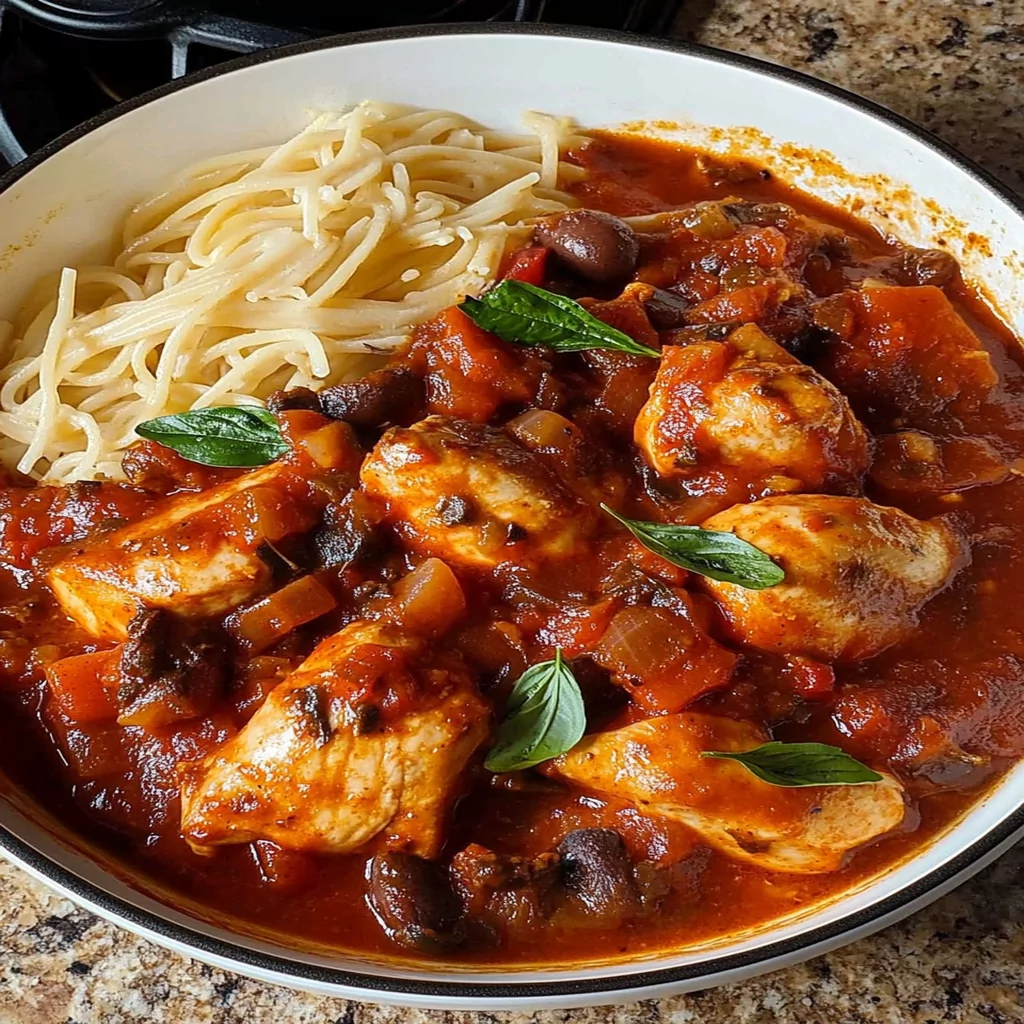
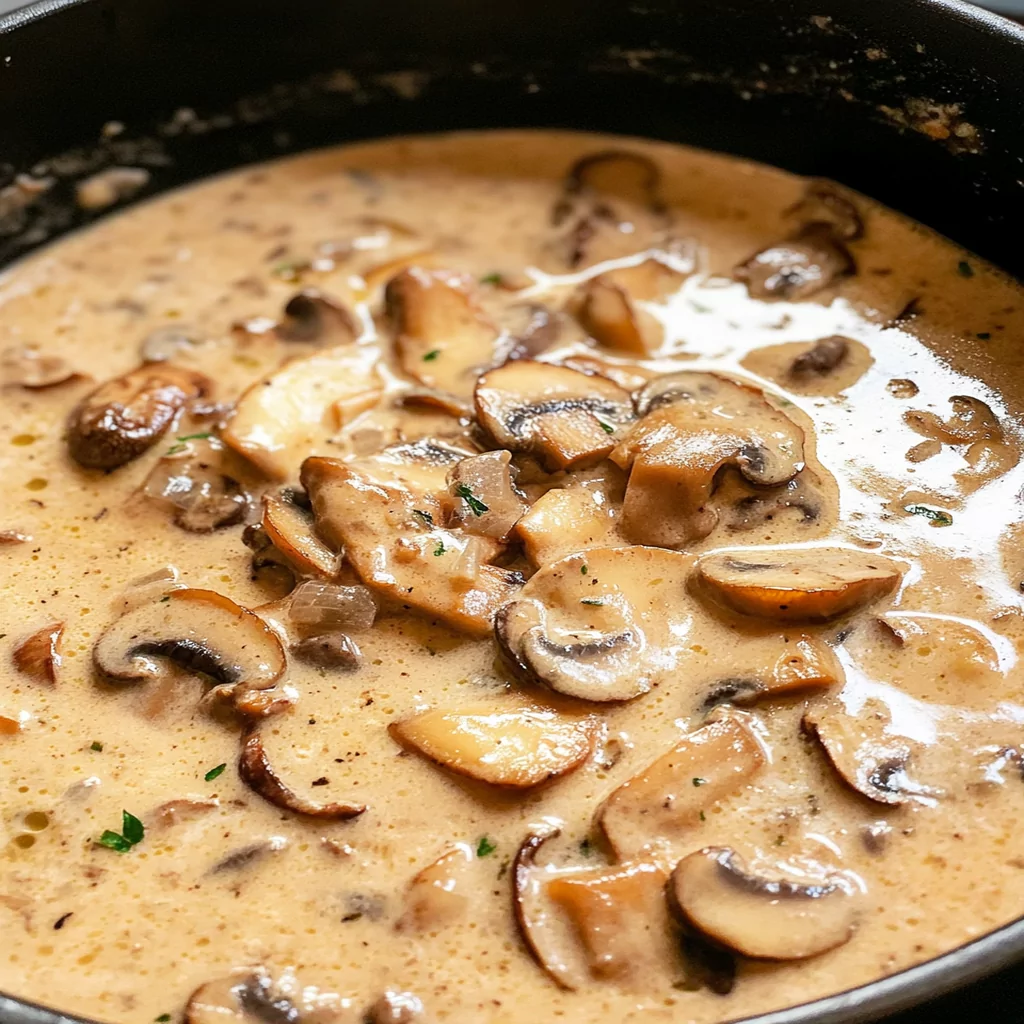


Leave a Comment